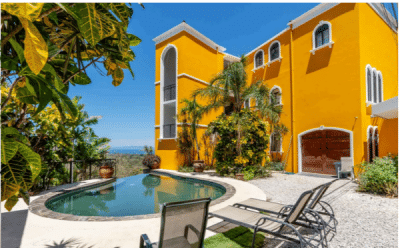The air was thick enough to drink, heavy with the perfume of wet earth and crushed ginger leaves. Somewhere above, a howler monkey’s guttural roar rolled through the canopy, followed by the metallic call of a toucan. My boots squelched in the deep brown mud as I followed a barely visible path, my guide’s machete slicing through ferns the size of patio umbrellas. And then—there it was.
In a small jungle clearing, half-swallowed by moss and leaf litter, sat a perfectly round stone sphere. Smooth, ancient, and utterly still, it looked as though it had rolled here from another time. In the misty light of the green season, it felt less like an artefact and more like a guardian—watching, waiting, remembering.

A Mystery Older Than the Rainforest
The Diquís stone spheres are older than most of the trees surrounding them. Crafted over 1,000 years ago by the pre-Columbian Diquís culture, they range from the size of a coconut to the size of a small car. Nobody knows exactly why they were made. Were they markers of power? Celestial calendars? Or something more spiritual? Theories swirl like the mist between the branches, but the spheres themselves keep their secrets.
Locals tell stories of gods who could soften stone like clay, or giants who rolled these boulders down from the mountains. Some swear the spheres hum if you press your ear against them on a full moon. I didn’t try—it seemed impolite to disturb whatever was sleeping inside.
The Green Season Magic
Visiting in September or October is like walking into the rainforest’s private world. The crowds are gone, the leaves gleam in every imaginable shade of green, and the air vibrates with life. Every breath smells of rain, flowers, and something ancient—something that reminds you you’re just passing through.
We stopped at a stream where blue morpho butterflies tumbled in the air like scraps of silk. The guide knelt, scooped a handful of water, and said, “The people who made the spheres drank from here, too.” It was a small thing, but it made the centuries between us feel paper-thin.
Where the Past Still Lives
You can see the spheres at the Finca 6 Archaeological Site, where several remain exactly where the Diquís people placed them. Others are scattered in the surrounding delta, hidden in farms, or resting in museum courtyards in Palmar Sur. But nothing compares to finding one in the jungle, where tree roots curl protectively around it, and orchids cling to the branches above.
Along the trail, we passed trees where scarlet macaws gossiped loudly, and once, a coati peeked from behind a trunk, nose twitching. The rainforest doesn’t stop to acknowledge your presence—it simply carries on, letting you slip through as an observer in someone else’s kingdom.
After the Hike
Back in town, muddy and happily exhausted, we sat down to steaming bowls of olla de carne and fresh pineapple juice. Around us, conversations flowed in Spanish and Bribri, the clink of cutlery mingling with the hum of fans. The spheres might be the headline act of the day, but the side notes—the taste of ripe mango, the sound of rain on tin roofs, the sight of children running barefoot through puddles—make the memory whole.
The Feeling You Take With You
The Diquís spheres aren’t just stone—they’re time capsules, holding something we can’t quite name. Standing before one, the rainforest alive around you, it’s easy to believe the stories about gods, giants, and ancient magic. Whether you’re an archaeologist, a dreamer, or just someone chasing a good adventure, you’ll leave with the same thought I did: the spheres may not reveal their secrets, but they’ll leave you with a few of your own.






